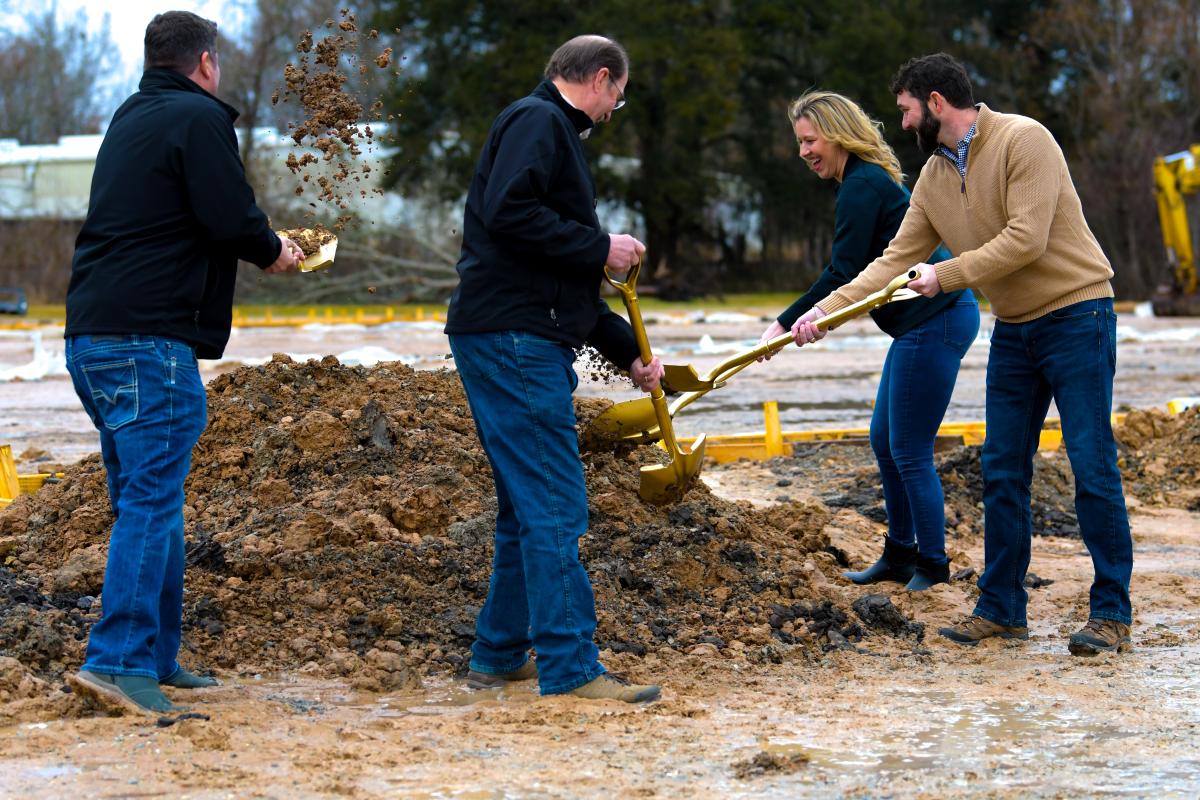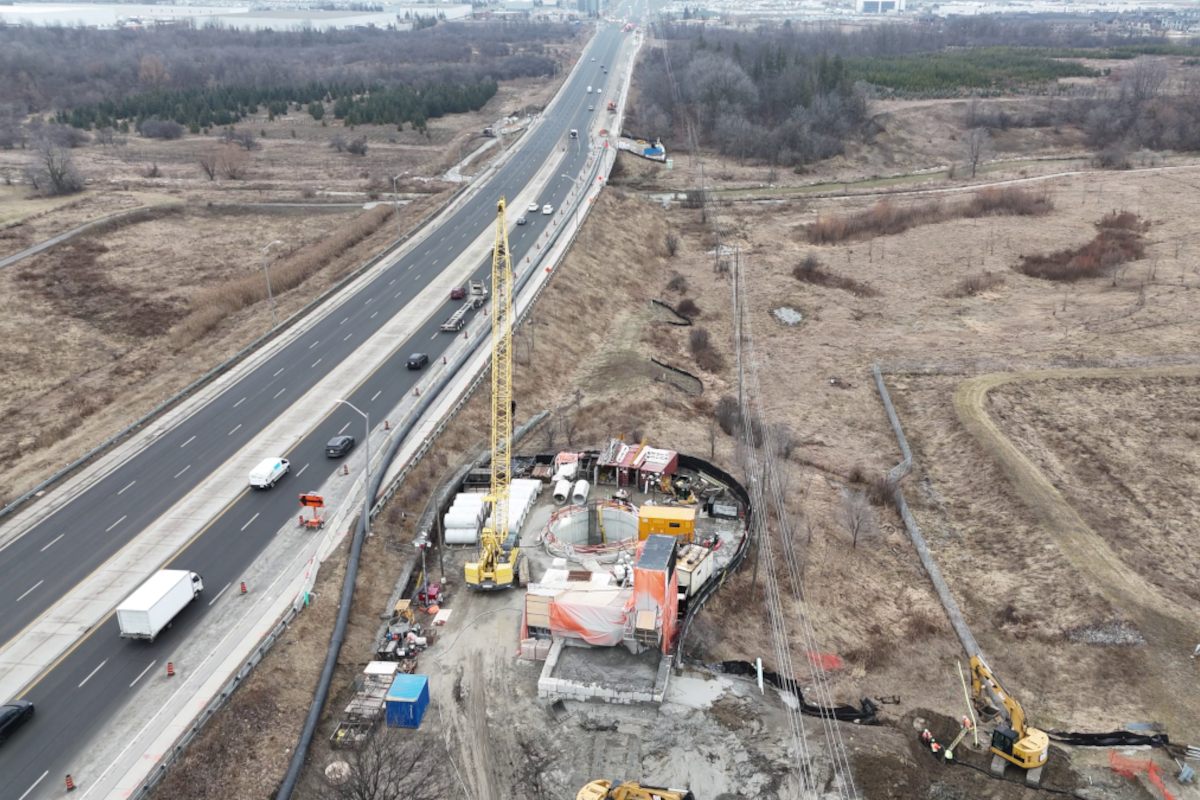
Bangor Water District Uses Polyurea Liner to Rehab Cast-Iron Pipe
October 20, 2015
Decades of normal use take a toll on municipal water infrastructure assets. Over time, mineral deposits build up inside potable water mains resulting in tuberculation, impeding hydraulics and compromising water quality.The Bangor Water District, Bangor, Maine, was dealing with this common problem in the summer of 2012. The district had 1,100 lf of unlined 16-in. cast iron pipe dating back to the 1940s. Water discoloration was an occasional concern, along with lowered chlorine residuals, an inability to provide high fire flows (a C-factor in the mid-50s) and significant tuberculation.
The Bangor Water District wanted to improve water quality and increase volume in the mains, as quickly, efficiently and with as little disruption to customers as possible. District officials were aiming for a solution to solve their current problems and extend the service life of their water mains, which left them open to piloting a new solution that could provide comprehensive results.
Options for Repair
Bangor Water District considered several available technologies including replace-in-place, cement mortar lining (CML), pipe bursting, CIPP lining, epoxy lining and polyurea lining. District officials settled on 3M Scotchkote Pipe Renewal Liner 2400 because it provided the best combination of cost, durability, chemical resistance and reputation.
At the time, Scotchkote Liner 2400, a polyurea liner, was a relatively new product on the market with several differentiators. It offered a relatively fast installation time, structural pipe enhancement, inhibited tuberculation, corrosion protection and potentially extended service life of the water mains.
The Application Process
Scotchkote Liner 2400 is applied using a trenchless, spin cast process. The Bangor project site was located throughout an industrial yard facility located on a former concrete runway of the now closed Dow Air Force Base. The water main made a 75-degree turn underneath the facility before heading due west and continuing to Bangor International Airport. This layout required the excavation of five pits (each 8 ft by 10 ft), providing access for sprayhead launch and retrieval at key points along the pipeline.
The Bangor Water District performed the excavation, disinfection and reinstatement and engaged another contractor to clean the water mains by drag-scraping prior to application.
The project was scheduled for three days, requiring 400 to 435 ft of lining per day to stay on that schedule. Once the pipe was cleaned, it was inspected using closed circuit television (CCTV) to identify any unexpected conditions. An umbilical was pulled through the pipe. Then, the sprayhead was attached, engaged and pulled back through at a specified rate, lining the pipe. Flow rate and temperature were key factors of a successful application. Experienced applicators monitored and made adjustments as required during the process.
Scotchkote Liner 2400 offers versatility in its applications. For protection against corrosion and tuberculation, the lining can be applied at a thickness of just 1.2 mm. To reinforce structural integrity, a 5.75-mm lining was applied in the Bangor Water District water mains.
The project stayed on schedule and Scotchkote Liner 2400 was successfully applied at a total of 2,424 L during the project. Throughout the procedure, all involved in the project worked together to ensure the best possible results.
Reinstatement and Results
A CCTV inspection was performed just 10 minutes after the application. After that, the mains were flushed, chlorinated and returned to service after successfully passing the required bacteria testing.
Using Scotchkote Liner 2400, Bangor Water District effectively addressed water quality issues by providing corrosion protection and inhibiting tuberculation in their water mains. In addition, it restored the pipe’s internal diameter and increased the water flow.
“The C-Factor on this pipe went from the mid-50s to over 130 and helped to restore fire flow requirements. We plan to use this product for future projects,” said Rick Pershken, district engineer at Bangor Water District.
Since the 2012 pilot project, Bangor Water District has used 3M products twice more on similar pipe lining projects. In both cases, the district chose to use Scotchkote Liner 2400 to repair and rehabilitate its water mains, preparing them for extended service life.
As of 2015, Scotchkote Liner 2400’s reputation for comprehensive rehabilitation has grown considerably. 3M instituted an Authorized Applicator program, providing extensive training to contractors. The program helps ensure that end customers receive the best application of the product provided by highly trained professionals using only pre-approved high quality equipment. To date, there are seven Authorized Applicators of Scotchkote Liner 2400 in North America and six more around the world.
Sunidh Jani is a global business development manager for 3M Water Infrastructure.






